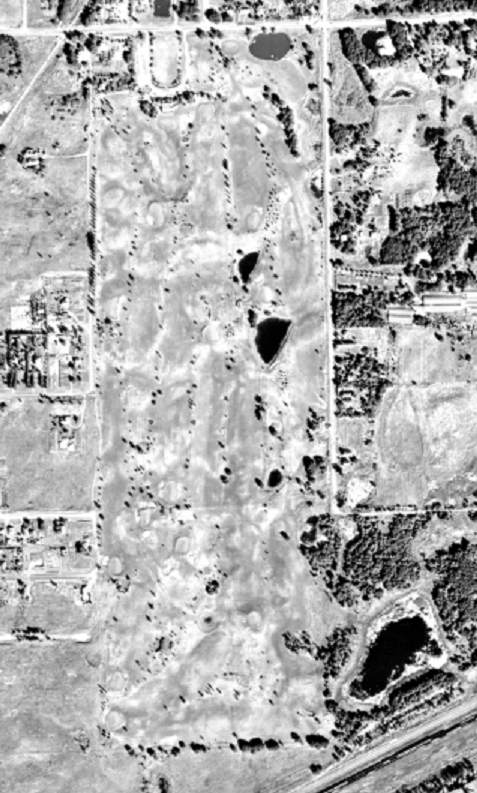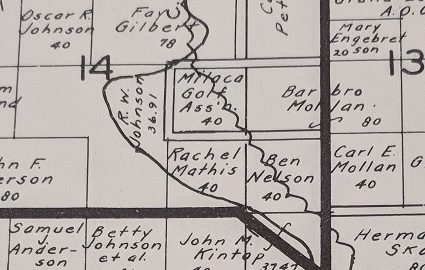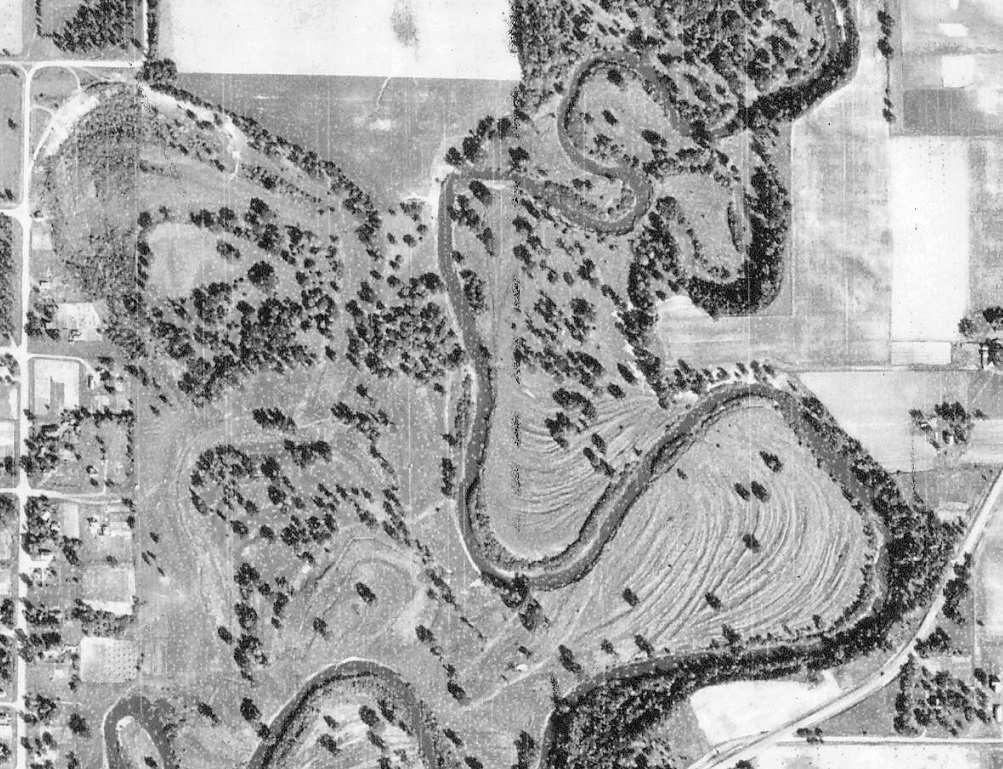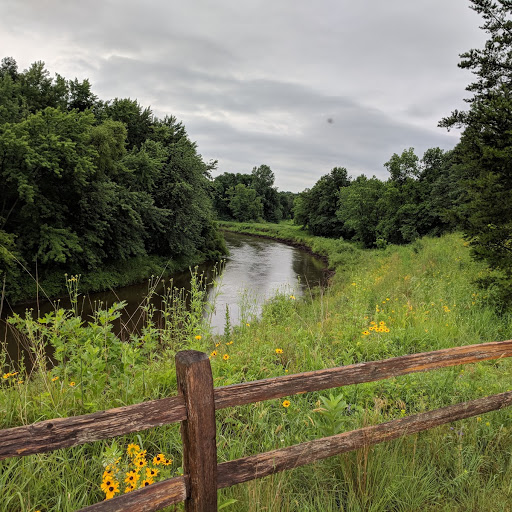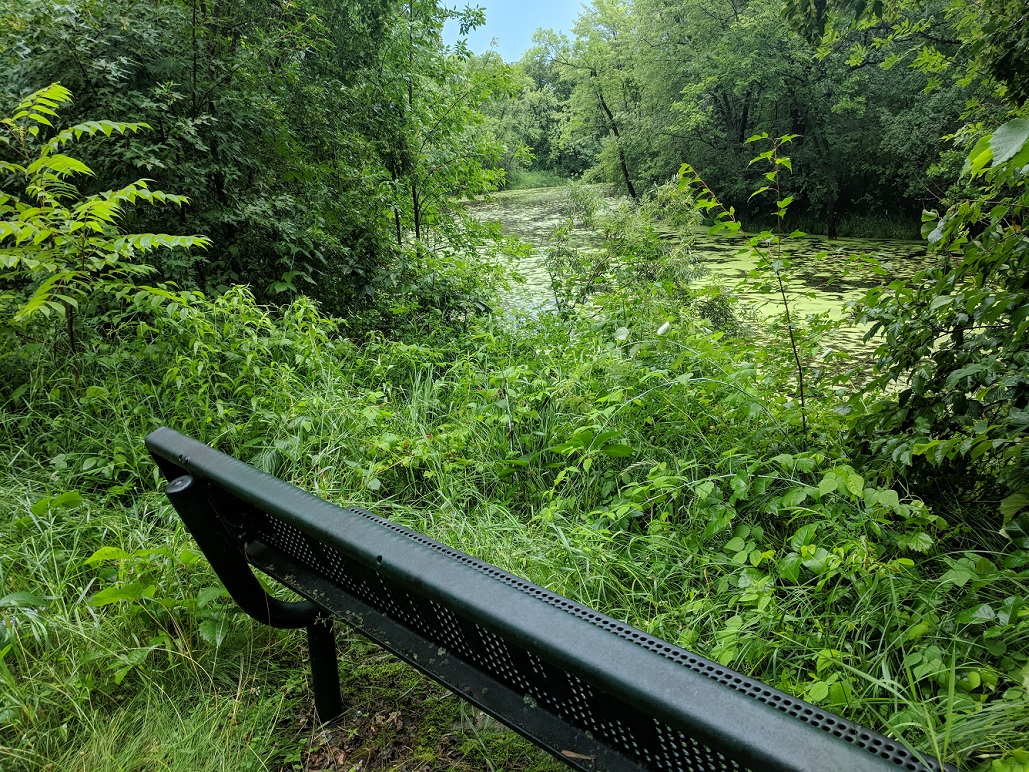Snelling Avenue. You’ve probably heard of it. Main north-south artery for transportation on 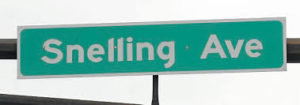 the western side of St. Paul. Traffic to rival that of a Martha’s Cookies stand as it rolls past the Minnesota State Fairgrounds.
the western side of St. Paul. Traffic to rival that of a Martha’s Cookies stand as it rolls past the Minnesota State Fairgrounds.
Como Avenue. You’ve probably heard of it, too. If not, then you’ve probably heard of Como the lake (not the enormous one in Italy) or Como the golf course or Como the zoo. Como the avenue meets Snelling just south of the Minnesota State Fairgrounds, in the northwestern quarter of Minnesota’s capital city.
Now, about that golf course at Snelling and Como …
… There wasn’t one. But there was one darn close to it, almost a hundred years ago. And there was, to be fair, a golf club even closer.
I’m betting you never heard of either one.
The following entry in the 1923 American Annual Golf Guide tells us of the golf course and for all intents and purposes tells us where it was — unless you want to be picky, a right I reserve for myself a couple of paragraphs from now.
The Lake Park Golf Club, relatively small in stature and and as far as I can tell rather unremarkable in every other way, long ago and for maybe as little as one golf season occupied a thin, rectangular plot of land not quite at Como and Snelling but within a solid midiron strike of it.
Lake Park is Minnesota lost golf course No. 206. (The other 200-plus I have identified can be seen on my Google lost course map.)
Information on The Lake Park Golf Club is sketchy, beyond the confirmation that it did in fact exist. That can be found in the April 2, 1922, edition of the St. Paul Pioneer Press, within a short story about local indoor golf clubs shutting down for the season in advance of the outdoor season. (Indoor golf clubs in downtown St. Paul and Minneapolis were common in the 1920s.) The story mentioned “Carl Lindgren, who again this season will be at the Lakeview Golf club and Sig Hanson who will teach the game at the newly organized Lake Park golf club.”
To expand and then briefly retreat, all indications are that The Lake Park Golf Club was an arm of something called the Lake Park Club. Though I did find one mention of a Lake Park Commercial Club as early as 1915, the Lake Park Club is not listed in St. Paul city directories until 1922. Those entries were preceded by a mention in the Pioneer Press of Sept. 10, 1921, that the city council had granted “a license regulating the Selling and Handling of Foodstuffs” to six parties, including “Lake Park Club, Snelling and Como Aves.”
But I would bet Tiger Woods’ $20 million yacht if he only would cede it to me that Snelling and Como isn’t exactly where the golf course was. At least not the Como part of it.
A 1916 St. Paul plat map, the closest to 1922 that is readily available, shows a 38-acre parcel owned by Archibald Emerson that is bordered by Snelling Avenue on the west, Northern Pacific railroad tracks on the south, Hamline Avenue on the east and Wynne Street on the north. (Como Avenue is two blocks north of Wynne.)

The following two aerial photos of that parcel from 1923 are eminently revealing.

The top photo shows the larger area near Snelling and Como, with part of the State Fairgrounds at the upper-left corner and part of Como Park on the right side. Snelling runs north-south through the entire left side of the photo. Como runs east-west, just above the midpoint of the photo. The presumed area of The Lake Park Golf Club is near the bottom-right-center of the photo.
The lower photo represents, I guess one would say, my Eureka! moment. Just north of the railroad tracks and east of Snelling is an area that I am 99 percent certain reveals a golf course. You might have to trust me on this, because I have looked at hundreds of old aerial photos of golf courses, and this parcel clearly shows fairway routing. Wynne Street is at the northern border of the golf grounds, with Breda Avenue one block north of that and Como one block north of Breda. (Note that the parcel just across Snelling to the west could be mistaken as fairway routings, but it almost certainly was a railroad switchyard.)
Click on either photo for a closer look. The bottom photo is pretty much a dead giveaway that a golf course was there. Driving around that area today, my impression is that there would have been room for a nine-hole golf course, albeit probably a short one.
The Lake Park Golf Club — assuming it was a private club — did not carry nearly the stature of St. Paul’s other private golf clubs. It received only a fraction of the coverage that was afforded by the Pioneer Press to the likes of Town & Country, Somerset, White Bear Yacht Club and Lakeview (renamed Hillcrest in 1923). Even the Phalen Park public course was mentioned more often.
But there were occasional nuggets. On April 7, 1922, the Pioneer Press listed Lake Park as one of nine members of the just-formed St. Paul Golf Association. On June 25, 1922, the newspaper reported that a St. Paul caddie tournament had been held, with Lake Park represented by Louie Rustad and Theodore Tupa. (Research shows a Theodore Tupa who was a Summit Avenue resident and bandleader in 1949.)
On June 4, the Pioneer Press reported that an open house would be held at Lake Park that day. The club, the newspaper said, “has not yet closed on its memberships. The fairways and greens are in splendid condition and plans are now underway for the completion of the club house.”
Whether the course survived into the 1923 season, I don’t know. Sharon Shinomiya of the Como Park Bugle graciously passed along this nugget to me, a passage from the St. Paul Daily News of April 1, 1923, in a story headlined “St. Paul Golf Clubs Prepare to Start Season Soon.”
“Chelsea Heights is the only course that is in doubt about having an instructor, but as golf pros are not lacking, it is probable that Chelsea Heights will have one also. This is the new course that was opened last year at Como …”
The Chelsea Heights reference surely was to the Lake Park course, which was — depending on whose hairs you care to split regarding geographical designations — in the Chelsea Heights or Tilden area of St. Paul’s Como neighborhood.
I found no other direct references to The Lake Park Golf Club in 1923 or beyond. By 1924, Sig Hansen (I believe this is the proper spelling of his last name) had become the new professional at Phalen Park. By 1928, the Archibald Emerson plot on which Lake Park golfers had played had been bought by Duluth & Virginia Realty Company of Minnesota, though the plot had not been commercially or residentially developed. Today, the old golf course land is occupied by the campus of Hmong College Prep Academy and apartment complexes, principally Como Park Apartments.


A few other notes on the Lake Park Club:
The 1922 St. Paul City Directory lists Lake Park Club as being headquartered at 1200 North Snelling — the intersection of Snelling and Como. Sam Y. Gordon was president and Earl P. Buglass was secretary (a Samuel Y. Gordon was Minnesota’s lieutenant governor from 1911-13). In a 1923-24 city directory, the club’s listed address was 1450 Breda Avenue (one block north of the golf grounds), with Samuel Skoog as secretary. A 1925-26 directory lists Buglass as secretary and the club at “Snelling Av ne cor (corner) Como Av.”
Subsequent references in city directories are titled “Lake Park Commercial Club,” based at 1208 North Snelling, and begin in 1926, with George Sweeney as secretary. Property cards at the Ramsey County Historical Society include frequent entries from 1926 through 1936, with notations such as confectionery, dance hall, 2 pool tables, roller skate rink, and “on sale.” The final entry, from Sept. 8, 1936, lists the property as “Roller Skating.”
Today, there is no longer a building standing at 1208 Snelling Avenue North.









